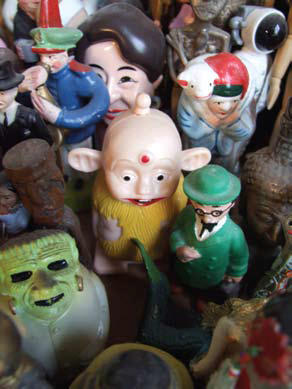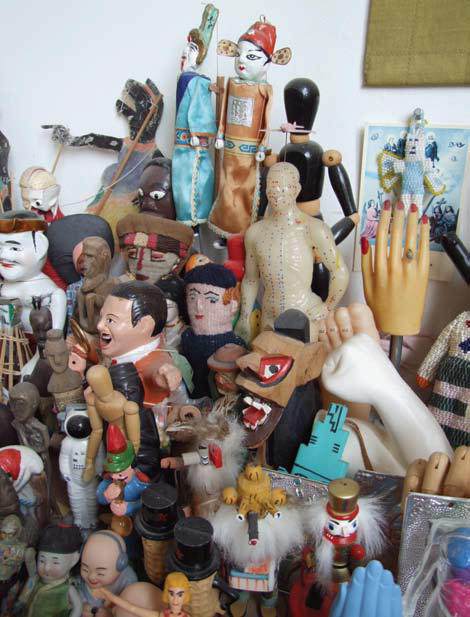
I started collecting postcards seriously in the 1970s, when my husband and I were living in Ithaca. He was working on the book that would become Delirious New York, and we would drive from town to town, searching for material.
Somewhere in Geneva, just off the New York State Thruway, we heard about a couple who lived in a trailer and had postcards to sell. They both worked the night shift, so we were welcome to visit after 5pm, when they would just be waking up.
Their whole trailer was packed with postcards. Every wardrobe was bulging with shoeboxes full of cards; I wondered where they kept their clothes. They watched us in amusement, their faces still creased from sleep, sitting on the couch in their bathrobes, the woman’s hair in curlers.
In this obscure treasure trove, we found one phenomenal card after another. Early models of Rockefeller Center, never realized; the unbuilt Coney Island Globe Tower, glowing with lights; shots of Manhattan’s subterranean underbelly exposed; firemen fighting flames. Dozens of incredible images, many of which made it into the book.
Later, when we moved to the city, we joined the New York Postcard Club, which met every Monday in a generic building on Broadway and Eighth Street. We became part of a strange, dysfunctional family.
There was no particular logic to the collecting habits of the members of the club. Some people never even looked at the front of a card, interested only in the serial numbers on the back. My own obsession was Americana. I looked for the most devastatingly sad places and notions: motels, a highway empty but for a single red car, a lone man on a bridge or sitting on a rock, tunnels, diners, the electric chair, cowboys, racist cartoons, and so on. Even in their attempts to present the glory days, you felt they were clinging to yesterday’s future.
One collector struck us with his extraordinary taste. He was deaf and dumb and held up a sign with the words “I collect Russian Royal family” written large. We never saw him get lucky.
I collected other things, too — tinted glass plates in all different colors, called Depression glass, I later discovered; orange juicers, for their streamlined Norman Bel Geddesesque shapes; salt and pepper shakers that look like buildings; miniature skyscrapers — any sort of small object.

Over the years, my collection has grown. I’ve started to think of it as a city. This city has a randomness that reflects human life. In it are the accidents of the world, a constant cycle of chance meetings and happenings. Like New York? In my city, people live side by side, facing out at us, not relating to one another, carved into their own tiny worlds. Perhaps this is one version of multiculturalism.
I am a permanent foreigner. As a foreigner, I am a misplaced person. I misunderstand, and I am equally misunderstood. This confusion is crucial to everything I do. As an outsider, I’m constantly failing. Maybe this is why I’m interested in failed objects. Defective, misguided, misshapen things, ambitions never realized. I began to adopt flawed objects because of this empathy with failure.
At its best, my collection is a microcosmic culture clash. There are visual surprises: the least plausible depiction of an idea, with accidental (or calculated) imperfections; objects of muddled origins, sometimes heavy with symbolic pretext; rejects from an outdated (or never fashionable) artistic order, reinterpreted, misrepresented, bizarre, or mysterious.
The objects that miss their target most are often the most irresistible. In my collection you’ll find a Minnie Mouse from India in regional dress; a Father Christmas with wings; a scorpion with a skull, for the Day of the Dead; an African Tin-Tin; and the entire Simpson family, sculpted from pistachio nuts. Freaks of culture. Surrounded by them, I feel like a tourist who has been given the wrong directions, but, not comprehending anyway, has still managed to end up in the right place